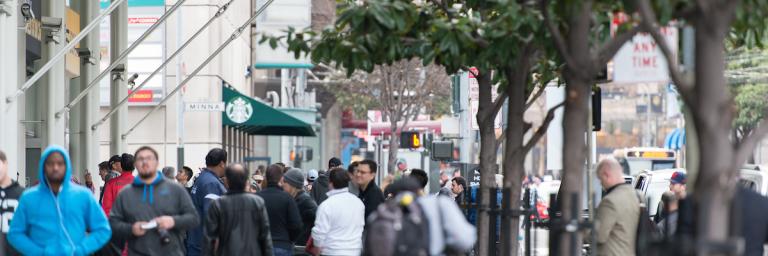Through the Climate Action Plan, the city has identified seven key strategies we must focus on in order to reach our emissions targets and address the climate emergency:
1. Build better transit:
The first step to reducing emissions is making public transit a more appealing way to get around by investing in our aging infrastructure, improving the experience of transit, building new rail lines, and more.

2. Walk, bike, and roll more:
You are the original low carbon mode! Encouraging people to walk, bike and roll to their destinations instead of using a car is one of the most effective ways to reduce emissions. We can do this by making streets safer and more accessible for pedestrians and cyclists. 
3. Charge for the true cost of driving:
Charging drivers who can afford it a fee to drive into downtown San Francisco will encourage a switch to low-carbon modes like buses and trains and will reduce congestion that disproportionately affects low-income communities of color. 
4. Manage parking:
The streets of San Francisco can’t get any bigger. Optimizing the limited space we have is key to creating a zero-emission transportation system, and managing the supply, cost and accessibility of parking is a huge part of that. 
5. Build housing near transit:
Building housing near transit is a great way to ensure the city’s future growth doesn’t lead to more emissions. By building more housing in San Francisco, we can reduce the number of people commuting in private vehicles from suburbs far outside the city. 
6. Optimize limited space:
Creating neighborhoods where people can easily walk or roll to their daily needs is a great way to cut down on trip length, vehicle travel and related emissions. This will require updating our zoning laws to allow for multi-unit housing and home-based businesses. 
7. Electrify vehicles:
Ultimately, there will always be trips that require a vehicle. That’s okay! It is important that those trips be by vehicles that run on electricity. 
